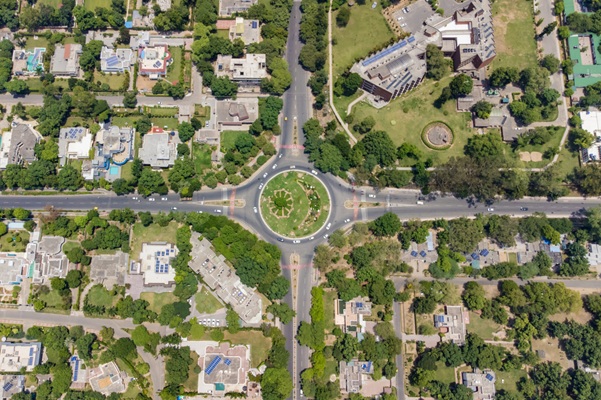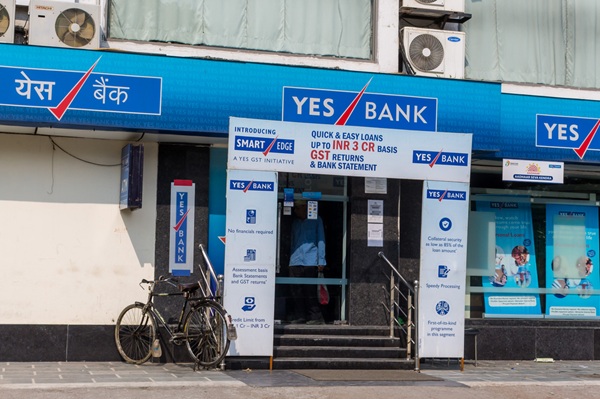.png)
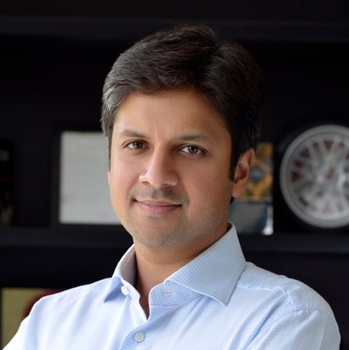
Anant Goenka is the Vice Chairman of the RPG Group. He is also the President-Elect of FICCI.
November 11, 2025 at 7:01 AM IST
(This column was first published in Times of India on Nov 10, 2025)
Tariff turmoil and tax transformations have been topping headlines. But a few more Ts test us daily: traffic, trash and toxic air.
Blackbuck, a logistics platform, considered moving out of Bengaluru’s Outer Ring Road citing potholes and harrowing commutes. Such concerns, along with air pollution and poor waste management, fuel India’s talent exodus. Meanwhile, foreigners are taking initiative – Lazar Jankovic and Caleb Friesen have gone viral for their campaigns to fix India’s streets and footpaths.
This demands serious attention. Cities power India’s economy – delivering ~60% of GDP with ~3% of our land and ~35% of our people. Mahatma Gandhi said “India is not Calcutta or Bombay; India lives in her seven hundred thousand villages”. But, by 2047, half of all Indians would call a city home. 70% of the infrastructure that would serve them is yet to be built. To become Viksit Bharat, cities must be clean, vibrant hubs that attract talent and investment, and ensure high living standards for all.
To shape this 20-year transformation, we must act now. Five bold moves:
1. Build “15-minute cities”: Before cars, cities were “15-minute” by default, where everyday amenities – shopping, education, healthcare, leisure and even work – were accessible within a 15-minute walk. Today, increasing sprawl has locked mobility behind a paywall of private vehicle dependence, fuelling congestion and pollution. Creating “complete neighbourhoods”, where basic needs are within a 15-minute walk, cycle or public transport ride, would make cities more liveable and equitable. This needs a key shift – design cities to move people, not vehicles.
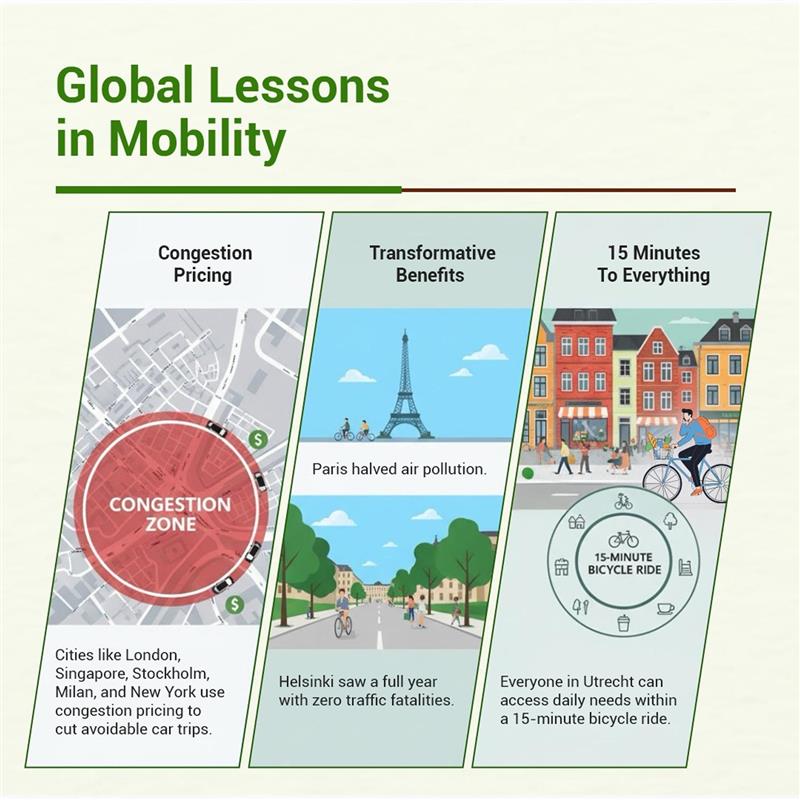
Prioritise public transport, last-mile connectivity, and transit-oriented development – as the adage goes, a developed country is not where the poor have cars, but where the rich use public transport. Expand electric bus fleets – most cities fall short of the recommended standard of 40-60 buses per lakh people. Pimpri-Chinchwad’s Non-Motorised Transport policy and Chennai’s demand-based parking reforms offer promising templates to encourage active mobility, free road space and fund footpaths. Alongside such interventions, congestion pricing in areas such as BKC in Mumbai or the ORR belt in Bengaluru could further cut avoidable car trips. London, Singapore, Stockholm, Milan and New York show that congestion prices work – gaining public acceptance as benefits became evident.
Such efforts yield multifaceted benefits. Paris halved air pollution; Helsinki saw a full year with zero traffic fatalities; everyone in Utrecht can access daily needs within a 15-minute bicycle ride. China, Singapore and others are following suit.
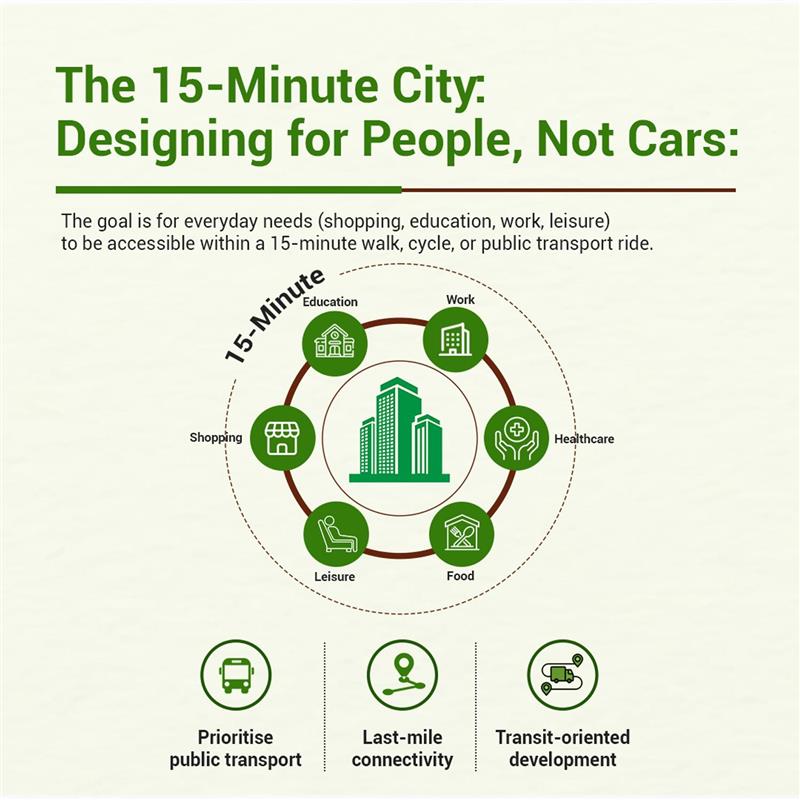
2. Design “8 to 80” cities: Our cities should serve people of all ages, abilities and genders. The “8 to 80” principle by urbanist Gil Penalosa is instructive: if a street is safe and comfortable for an 8-year-old as well as an 80-year-old to navigate unaided, it would be safe for all.
This requires flat, wide footpaths, tactile paving, benches, lighting, safe crossings, and transportation with level boarding. A simple accessibility test is how often you see parents with strollers – common in walkable cities abroad, but rare in India. Prioritize green spaces and urban forests. Converting unused plots into parklets for play, exercise, and rest can enhance health and provide respite from heat, especially for children and the elderly.
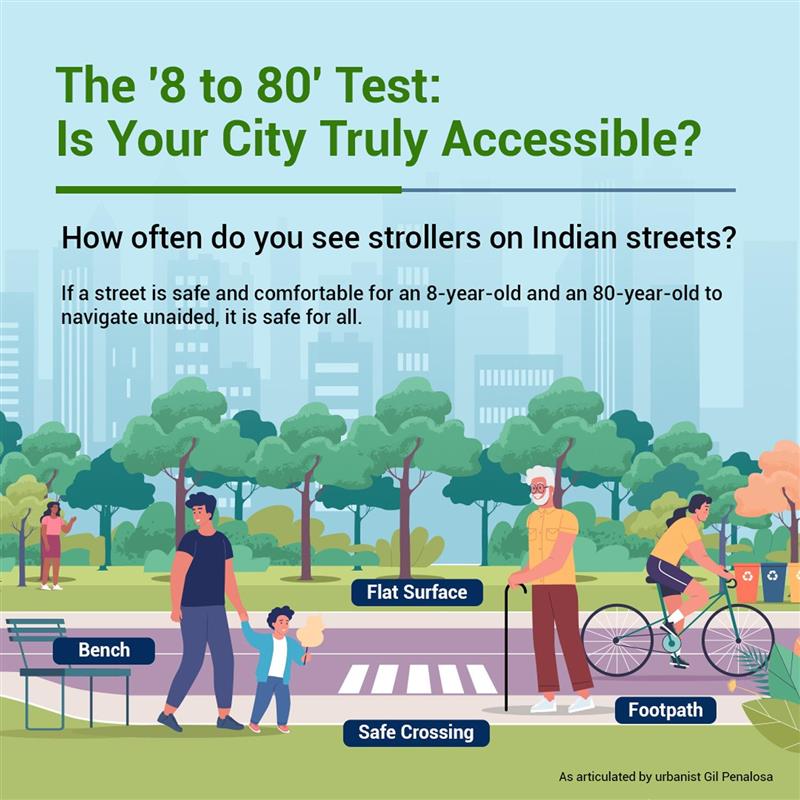
3. Unlock a 24-hour economy: Our cities wind down too early, with most shops closed and streets empty after dark. A Night-Time Economy policy can make our cities vibrant, productive and safe 24x7. Promoting night markets, extending public transport operations, and improving lighting and policing would boost local businesses. Over 80 cities globally have ‘night mayors’ to liaise with police, businesses and citizens to deliver a thriving nightlife.
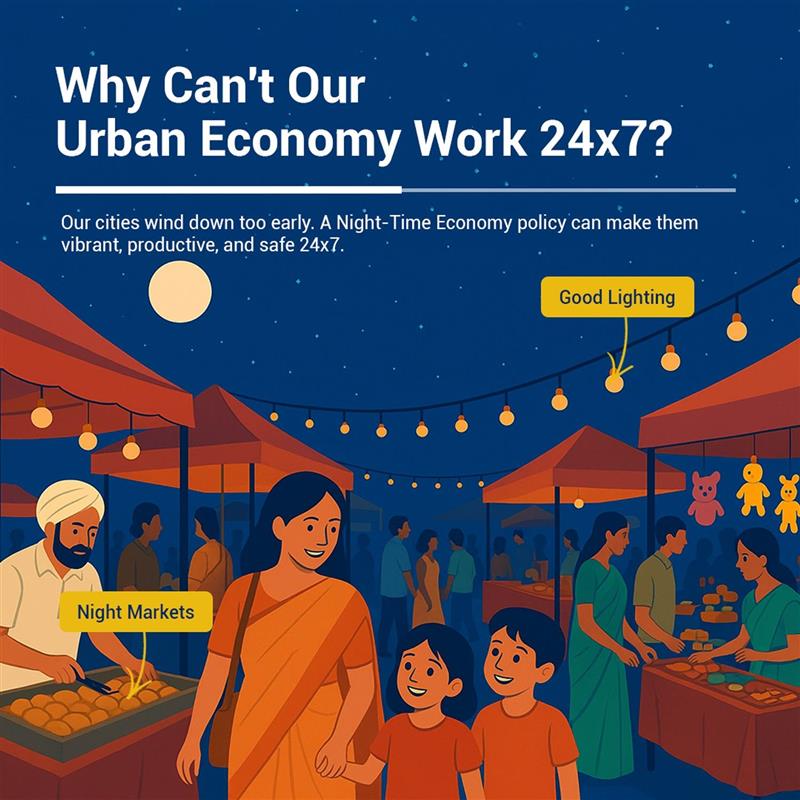
4. Empower cities to deliver: Strong, elected urban local bodies are the backbone of good urban governance. A Janaagraha report found that ~60% of municipalities across 17 states – including megacities like Mumbai, Bengaluru and Pune – faced average election delays of nearly two years. Even where elected bodies exist, mayors lack authority and funds. On-time elections, empowered mayors with five-year terms, and financial devolution would unshackle urban growth and spark a healthy spirit of “competitive urbanism” to complement “competitive federalism”. For large city-regions, regional development authorities can ensure unified planning across jurisdictions.
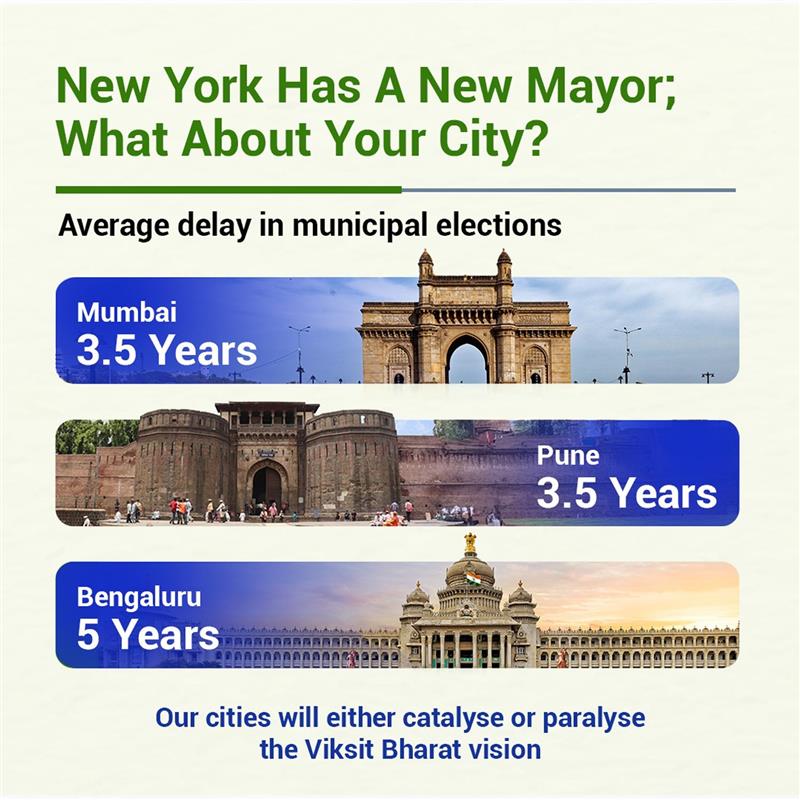
5. Create Task Forces for thoughtful urban design: Urban transformation requires specialized skillsets and institutional capacity. Create Transformation Task Forces of urban designers, architects and climate experts, embracing thoughtful placemaking and contextual design. New buildings often ignore their surroundings, leaving streets without footpaths, shade, or public transport links. New projects should reflect local character, not generic glass-and-concrete facades.
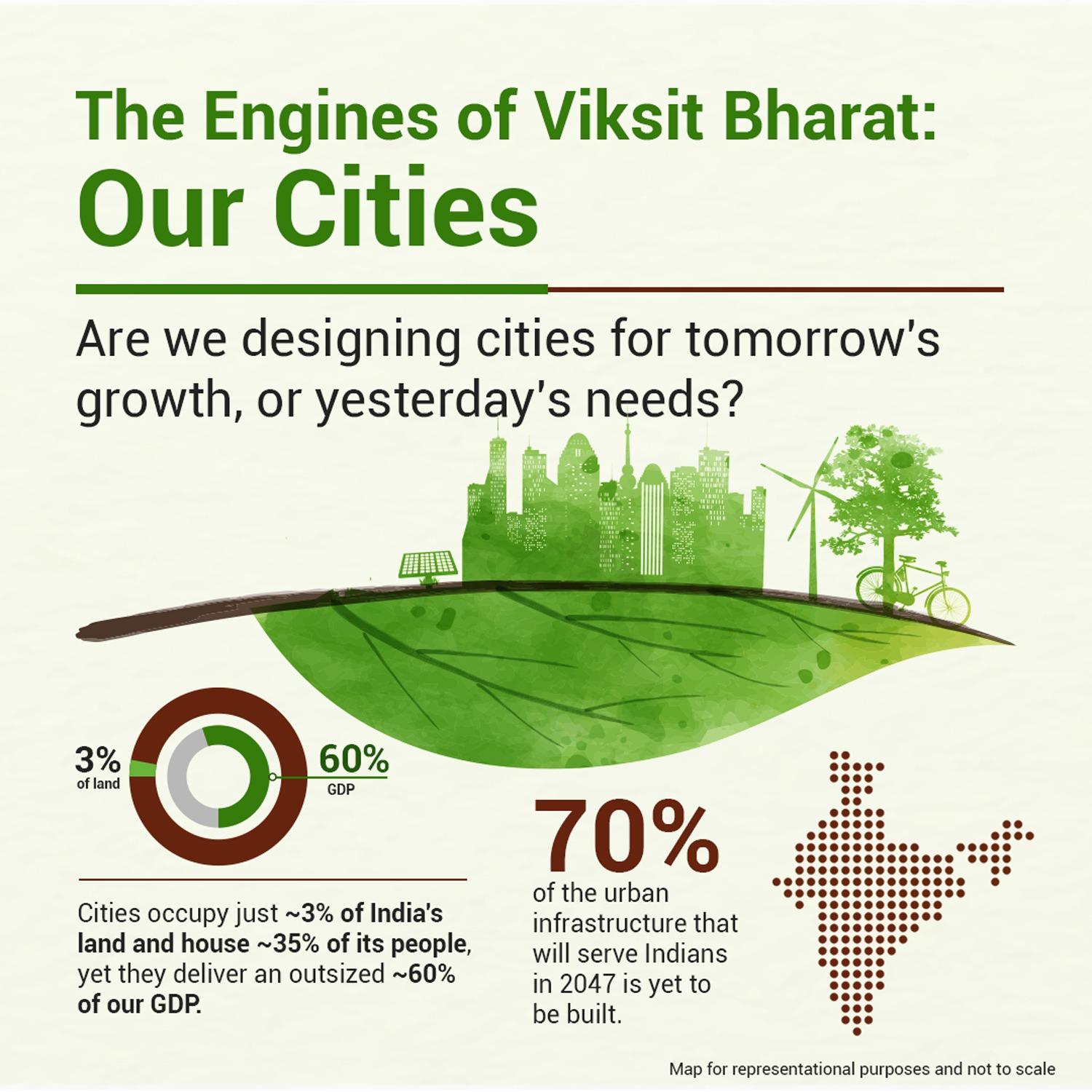
International partnerships can accelerate learning – for instance, Netherlands for cycling and flood resilience and Japan for transit-oriented development. Domestic institutions should embed this expertise and build an Indian talent base to deliver functional, beautiful, and future-ready cities.
This must not be cosmetic, but a proactive approach to drive growth, innovation, and competitiveness. Our cities will catalyse or paralyse Viksit Bharat – can we make the right choice?
